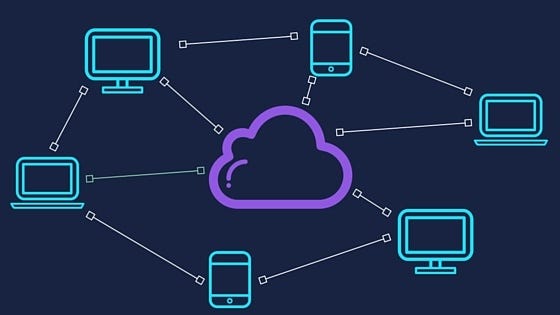NETWORK CONGESTION
Network protocols that use aggressive retransmissions to compensate for packet loss due to congestion can increase congestion, even after the initial load has been reduced to a level that would not normally have induced network congestion. Such networks exhibit two stable states under the same level of load. The stable state with low throughput is known as congestive collapse.
Networks use congestion control and congestion avoidance techniques to try to avoid collapse. These include exponential back off in protocols such as CSMA/CA in 802.11 and the similar CSMA/CD in the original Ethernet, window reduction in TCP, and fair queuing in devices such as routers and network switches. Other techniques that address congestion include priority schemes which transmit some packets with higher priority ahead of others and the explicit allocation of network resources to specific flows through the use of admission control.
Congestive collapse (or congestion collapse) is the condition in which congestion prevents or limits useful communication. Congestion collapse generally occurs at choke points in the network, where incoming traffic exceeds outgoing bandwidth. Connection points between a local area network and a wide area network are common choke points. When a network is in this condition, it settles into a stable state where traffic demand is high but little useful throughput is available, packet delay and loss occurs and quality of service is extremely poor.
Congestive collapse was identified as a possible problem by 1984. It was first observed on the early Internet in October 1986, when the NSFnet phase-I backbone dropped three orders of magnitude from its capacity of 32 Kbit/s to 40 bit/s, which continued until end nodes started implementing Van Jacobson's congestion control between 1987 and 1988. When more packets were sent than could be handled by intermediate routers, the intermediate routers discarded many packets, expecting the end points of the network to retransmit the information. However, early TCP implementations had poor retransmission behavior. When this packet loss occurred, the endpoints sent extra packets that repeated the information lost, doubling the incoming rate.
Congestion control modulates traffic entry into a telecommunications network in order to avoid congestive collapse resulting from oversubscription. This is typically accomplished by reducing the rate of packets. Whereas congestion control prevents senders from overwhelming the network, flow control prevents the sender from overwhelming the receiver.
Connection-oriented protocols, such as the widely used TCP protocol, generally watch for packet errors, losses, or delays (see Quality of Service) to adjust the transmit speed. Various network congestion avoidance processes support different trade-offs.
The TCP congestion avoidance algorithm is the primary basis for congestion control in the Internet.
Problems occur when concurrent TCP flows experience port queue buffer tail-drops, defeating TCP's automatic congestion avoidance. All flows that experience port queue buffer tail-drop begin a TCP retrain at the same moment – this is called TCP global synchronization.
The slow-start protocol performs badly for short connections. Older web browsers created many short-lived connections and opened and closed the connection for each file. This kept most connections in the slow start mode, which slowed response times.
The protocols that avoid congestive collapse are often based on the idea that data loss is caused by congestion. This is true in nearly all cases; errors during transmission are rare. However, this causes Wi-Fi, 3G or other networks with a radio layer to have poor throughput in some cases since wireless networks are susceptible to data loss due to interference. The TCP connections running over a radio-based physical layer see the data loss and tend to erroneously believe that congestion is occurring.
Congestion avoidance can be achieved efficiently by reducing traffic. When an application requests a large file, graphic or web page, it usually advertises a "window" of between 32K and 64K. This results in the server sending a full window of data (assuming the file is larger than the window). When many applications simultaneously request downloads, this data creates a congestion point at an upstream provider by flooding the queue. By using a device to reduce the window advertisement, the remote servers send less data, thus reducing the congestion. This technique can reduce network congestion by a factor of 40.

Cisco Systems (Engine IV and V) has the capability to classify flows as aggressive (bad) or adaptive (good). It ensures that no flows fill the port queues. DBL can utilize IP ECN instead of packet-delete-signaling.
Another approach is to use IP Explicit Congestion Notification (ECN). ECN is used only when two hosts signal that they want to use it. With this method, a protocol bit is used to signal explicit congestion. This is better than the indirect packet delete congestion notification performed by the RED/WRED algorithms, but it requires explicit support by both hosts. ECN coauthor Sally Floyd published detailed information on ECN, including the version required for Cisco IOS.

Comments
Post a Comment